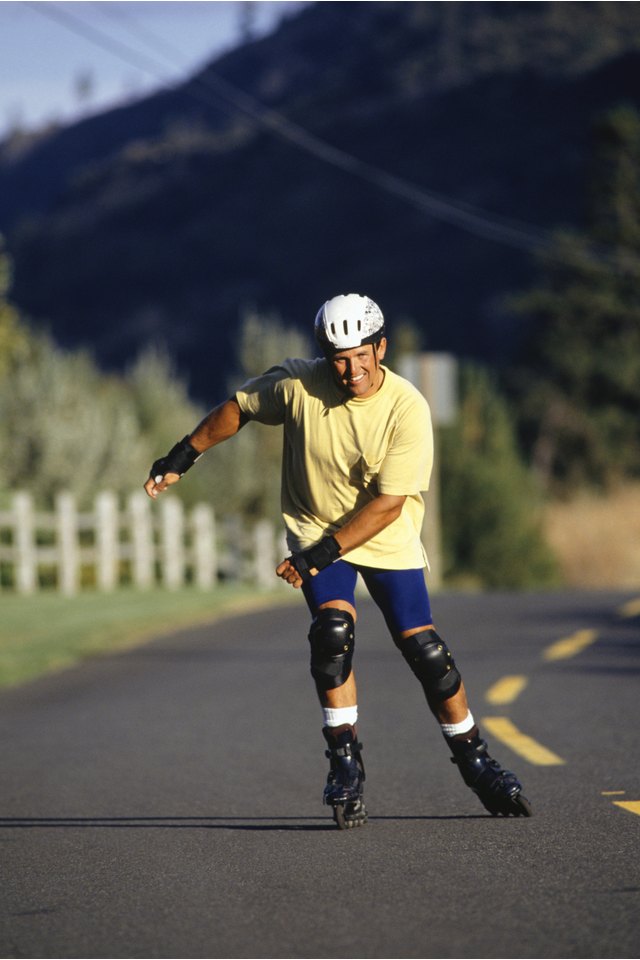Can You Use a Bicycle Helmet to Rollerblade With?

Rollerblading is a popular sport for people of ages. The American Academy of Orthopaedic Surgeons estimates that more than 17 million people in the United States enjoy this type of roller skating, also called inline skating. Rollerblading can also be fraught with injury, mainly in the form of soft tissue strains and sprains, wrist fractures and head injuries. Wearing a helmet and protective padding can help reduce the risk of rollerblading injuries. In many cases, a bicycle helmet offers adequate protection to inline skaters.
Recreational Rollerblading
The U.S. Consumer Product Safety Commission states that bicycle helmets that uphold federal safety standard ASTM F1447 are appropriate for use during recreational rollerblading. "Recreational" refers to inline skating done in a non-aggressive manner. Most people who rollerblade on a sidewalk, bike path or indoor skating rink participate in recreational rollerblading. Bike helmets of this kind, also sometimes called sport helmets, are designed as a "single impact" helmet. This means that the helmet is not certified to protect you again after a crash or accident. The inner padding of a single impact helmet becomes crushed upon impact and is rendered less effective. Replace your bike helmet after being involved in a significant impact to the head.
Rollerblading Tricks
Inline skaters who throw caution to the wind and prefer to perform jumps and tricks on rollerblades are better off using a skateboarding helmet than a bicycle helmet, according to the CPSC. Skateboarding helmets upholding the federal safety standard ASTM1492 are multi-impact helmets designed to withstand more than one incident or accident. Replacement is not always necessary after a single crash unless the helmet is visibly cracked or otherwise damaged.
Proper Fit
Bicycle and skateboard helmets used in rollerblading must fit properly to provide ample protection. Helmets come in different sizes based on the diameter of your head and are marked in centimeters. Measure your head right above your eyebrows to ensure you buy the correct size helmet. Opt for a slightly larger helmet if you are between sizes -- many helmets for rollerblading and other sports feature an adjustable area of padding inside the helmet to make sure you are amply protected. Adjust the chin strap so it fits snugly when you move your head and open your mouth. The helmet should remain level on your head without tipping back when the proper fit is established.
Injury Prevention
In addition to a bicycle or skateboarding helmet, protective padding for the wrists, elbows and knees can prevent inline skating-related injury. Wear the pads every time you rollerblade to help break your fall. You can further prevent injury by learning the proper techniques of the sport, such as stopping and turning safely. Follow all local traffic and pedestrian laws to avoid getting into an accident. If you have never skated before or have not exercised for awhile, let your doctor know before you start. Lastly, warm up with some gentle stretching to keep yourself from getting hurt before you put on your rollerblades.
References
Writer Bio
Erica Roth has been a writer since 2007. She is a member of the Society of Professional Journalists and was a college reference librarian for eight years. Roth earned a Bachelor of Arts in French literature from Brandeis University and Master of Library Science from Simmons College Graduate School of Library and Information Science. Her articles appear on various websites.
